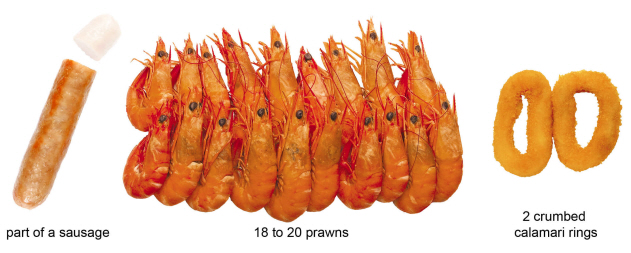Why a small plate is not always best for weight loss and health
small or large plate to lose weight?
Have you downsized your dinner plate or even bought a special diet plate to help lose weight?
Is it working for you?
If not, I will give you some clues as to why and what to do ....
Since the 1960s, the typical main meal dinner plate has grown in size from about 22 to 26 cm (8.7 to 10 inches) across.
Downsizing the plate seems a logical approach for weight loss and better health but interestingly downsizing the plate may not be ideal for you.
Eating off a larger plate is not always a bad thing.Eating off a larger plate can be a great thing to do! How?
- If the main meal is the only time you eat vegetables or salad and fruit, you can load up the plate with these.
- A larger plate that’s dominated by vegetables and salad but is not over-crowded leads to a higher vegetable and salad intake.
what's not on the plate?
What’s not on the plate is still very, very important.
Your food choices at other times matter as much as what’s on your main plate. Quite often those choices and serves matter more.
Think about it.
How many times a day, a week, a year don’t you eat off a dinner plate? The non-meal time eating and drinking - the breakfasts, lunches, snacks, drinks (non-alcoholic and alcoholic), soups, pick-me-ups and parties.
- Many foods do not even reach a plate and are consumed out of packets, boxes, jars, bottles and out of meal zones.
- Snack-eating and grazing replace traditional meals with no plate, large or small, in sight.
Let’s say you eat off a dinner plate seven times a week. That leaves at least 7 breakfast and 7 lunches and at least one (but likely more) snacks and foods eaten between meals. And don’t forget the side orders, drinks and soups.
The main plate accounts for 20-25% of your daily food, maybe.
Reduce the size of the main meal plate and there’s a real risk you will snack and graze more without even realising it.
If you have down-sized your plate and are still struggling with your weight, take a good look at what's on the plate and all the other food choices that don't even hit the plate.
when do small plates fail?
A small dinner plate will fail for you when it is:
- filled with light, low carb, low protein food. The contents simply won't satisfy you. You will be left hungry and hunting for more food.
- filled with energy dense foods. Energy dense food serves may look innocent and small but they are not. They are packed with too many kilojoules for their tiny size.
serve size matters
Which is the largest serve size? Clearly the prawns.
Which contains the most energy (kilojoules or calories)? They are all equal in the serve sizes shown.

In this case, the prawns would take much longer to eat and be far more filling and satisfying that 2 crumbed calamari rings or part of a sausage.
The sausage and crumbed calamari rings are energy dense.
These pictures show that small serves are not always best. See many more for yourself in 'this=that: a life-size photo guide to food serves'.
